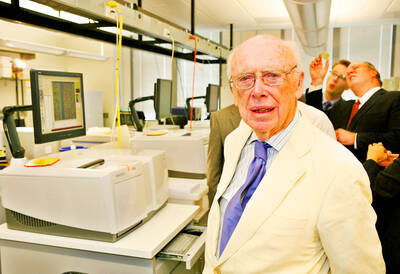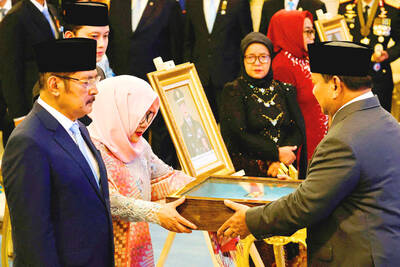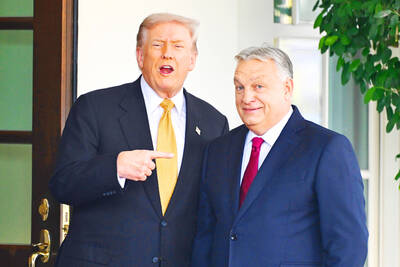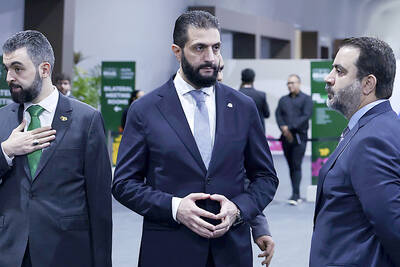A smartphone app is being touted as the potential solution to the yawning linguistic gulf between US soldiers in Afghanistan and the Pashtun villagers they are trying to win over.
After a decade of relying on interpreters, the US military is testing a simultaneous translation program that runs on an ordinary smartphone.
Developed by US defense department scientists, it can translate from English into Dari and Pashto, the two main languages of Afghanistan, and back again.
“Transtac” (short for translation system for tactical use) is being tested by members of the 101st Airborne Division in the eastern area of Paktika Province.
David McKim, an intelligence officer with the US army, said the system was in a six-month test phase, with just a handful of devices likely to see action in Paktika.
“The idea is to give soldiers the ability to communicate, even if it is just on a basic level, with the Afghan people when an interpreter isn’t available,” he said.
Breaking down barriers and building trust between foreign soldiers and Afghans is one of the key ambitions of the counter-insurgency strategy being pursued in the country. However, when kitted out with bulky body armor and blast-resistant sunglasses, US soldiers attempting to influence Afghan hearts and minds often look more like beings from another planet.
High-tech smartphones alone are unlikely to bridge the cultural gap, but the technology does seem to be a big step forward from the earlier “Phrasealator” employed in Afghanistan and Iraq. The relatively crude device simply contained a list of standardized, pre-recorded sentences and words that developers thought soldiers would find useful.
However, although soldiers could choose a variety of phrases in English — which would then be reproduced in Arabic or Pashto — they could not translate the reply.
Good interpreters are scarce in the US military, which has been forced to pay huge salaries to attract Afghans who have adequate language skills and are prepared to undertake the dangerous work of foot patrols in a war whose hallmark weapon is the hidden roadside bomb.
The US also offers the best and longest-serving “terps” the chance to apply for US citizenship. Afghan-American citizens are also recruited, although there have been cases where middle-aged “cultural advisers” have struggled to keep up with their super-fit military colleagues.

James Watson — the Nobel laureate co-credited with the pivotal discovery of DNA’s double-helix structure, but whose career was later tainted by his repeated racist remarks — has died, his former lab said on Friday. He was 97. The eminent biologist died on Thursday in hospice care on Long Island in New York, announced the Cold Spring Harbor Laboratory, where he was based for much of his career. Watson became among the 20th century’s most storied scientists for his 1953 breakthrough discovery of the double helix with researcher partner Francis Crick. Along with Crick and Maurice Wilkins, he shared the

OUTRAGE: The former strongman was accused of corruption and responsibility for the killings of hundreds of thousands of political opponents during his time in office Indonesia yesterday awarded the title of national hero to late president Suharto, provoking outrage from rights groups who said the move was an attempt to whitewash decades of human rights abuses and corruption that took place during his 32 years in power. Suharto was a US ally during the Cold War who presided over decades of authoritarian rule, during which up to 1 million political opponents were killed, until he was toppled by protests in 1998. He was one of 10 people recognized by Indonesian President Prabowo Subianto in a televised ceremony held at the presidential palace in Jakarta to mark National

US President Donald Trump handed Hungarian Prime Minister Viktor Orban a one-year exemption from sanctions for buying Russian oil and gas after the close right-wing allies held a chummy White House meeting on Friday. Trump slapped sanctions on Moscow’s two largest oil companies last month after losing patience with Russian President Vladimir Putin over his refusal to end the nearly four-year-old invasion of Ukraine. However, while Trump has pushed other European countries to stop buying oil that he says funds Moscow’s war machine, Orban used his first trip to the White House since Trump’s return to power to push for

LANDMARK: After first meeting Trump in Riyadh in May, al-Sharaa’s visit to the White House today would be the first by a Syrian leader since the country’s independence Syrian President Ahmed al-Sharaa arrived in the US on Saturday for a landmark official visit, his country’s state news agency SANA reported, a day after Washington removed him from a terrorism blacklist. Sharaa, whose rebel forces ousted long-time former Syrian president Bashar al-Assad late last year, is due to meet US President Donald Trump at the White House today. It is the first such visit by a Syrian president since the country’s independence in 1946, according to analysts. The interim leader met Trump for the first time in Riyadh during the US president’s regional tour in May. US envoy to Syria Tom Barrack earlier